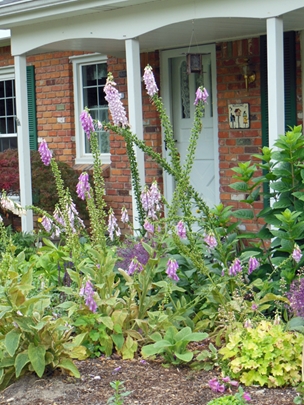
enlarge this imageFoxgloves (Digitalis), hollyhocks and delphiniums often acquire this ridiculous appearance because the gardener thinks "If I cut it, then that's it." Not so. f you deadhead before ripening seed takes control of the plant's growth, more flower stems will develop from lower on the main stem, or from the crown. So, when the inches of seed forming below the flower exceed the inches of buds coming above, it's high time to deadhead these spikes.
Cut flowers, cut lots of flowers!
Blanket flower (Gaillardia), foxglove
(Digitalis), snapdragon, blackeye Susan vine... just about everything
that flowers looks and grows better without spent blooms.
It may seem like you're eliminating color but in every over the
hill flower there is brown. Removing the brown immediately
clarifies the flower color and you'll be spurring the development
of new buds, too.



Take off the whole flowering stem
Don't pull off petals
and leave the seed pod.
Right, top: A snapdragon flower stalk
bearing only seed pods above. Right, below: A stem that was
deadheaded two weeks beforehand, now full of flower buds.
As with cutting back annuals in
containers, you will be more confident with your snips once you
make a positive I.D. -- what's a bud, what's a seed pod.
Close look at blackeye
Susan vine
Blackeye Susan vine (Thunbergia alata) is one of
those plants with just-forming seed pods similar in appearance to
half-grown flower buds.

(Above, inset photo: An update; same
vine 3 weeks later.)
Below: Feel and peel, in this case --
the pods feel drier than the buds, and gape open at the tip when
you press them. Peel one open and you can't miss the difference
between petals ready to unfurl (center), and petalless seed
pod.

More about deadheading!